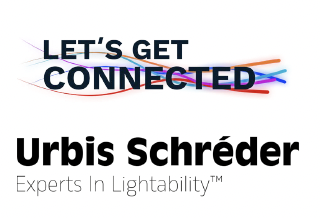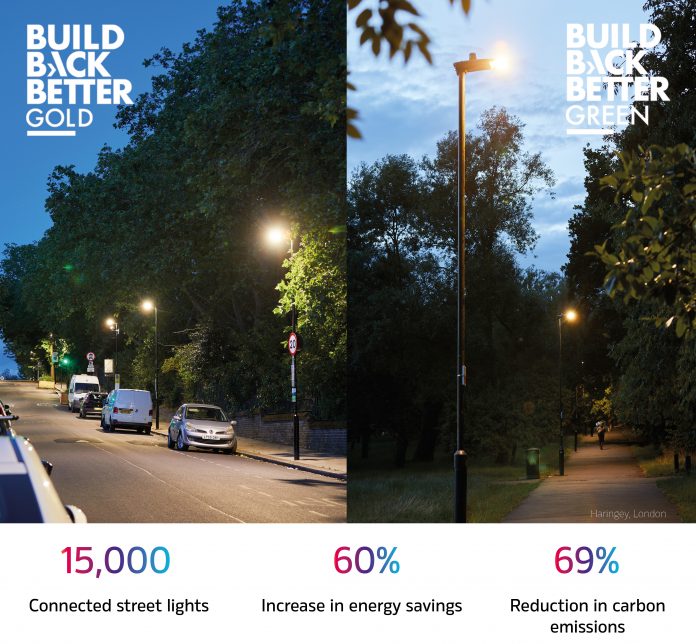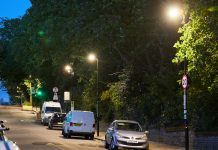Clare Thomas, Head of Logic and Gary Bennett, Regional Director of UK and Ireland from Urbis Schréder, walk us through smart connected lighting, including their views on creating a sustainable urban ecosystem
With energy prices relentlessly rising, there has never been a better time for the government and local authorities to reduce overhead costs and increase energy savings. Gary Bennett, Regional Director (UK and Ireland) of Urbis Schréder, states, “Urbis are introducing not just lighting but offering additional services, helping customers reduce their carbon footprint and take control of their lighting solutions.”
Lighting has changed over the past 50 years in a major way. With the advancing technology, we are now able to introduce control management systems, like Schréder’s EXEDRA, that enable our customers to collect. real-time data and have fingertip 24-hour control over their lighting schemes, either in isolation or as a whole.
A well-planned, connected lighting solution can significantly reduce your carbon footprint and energy use – by up to 85% vs traditional sources – whilst also reducing operational and maintenance costs. However, we not only help our clients achieve all the above, but we also help maintain their journey towards NetZero and decarbonisation.
It’s not just SMART, it’s LOGIC
LOGIC is our approach to how well- planned solutions work – considering all situations and how they can be ‘connected-ready’. In simpler terms, our logic team provides the right solution that considers all scenarios and components, e.g., luminaire types, incorporating smart CMSs (Control Management Systems), lowering carbon footprint, minimising energy costs, etc. and how they can all work harmoniously to achieve the intended outcome/client brief.
Light beyond limits: Connected lighting with Schréder’s EXEDRA
But what does ‘connected-ready’ mean? ‘Connected-ready’ means each luminaire is ‘ready’ to operate with smart control systems and sensors, like Schréder’s EXEDRA. Schréder’s EXEDRA is a smart interoperable system which allows you to remotely access and receive real-time data, allowing you to plan, monitor and control outdoor lighting networks that consequently support your journey towards decarbonisation by lowering your carbon footprint while achieving significant energy savings.
Invisible connection, clear energy savings: London Borough of Haringey Goes Smart
Haringey Council, one of London’s 32 administrative boroughs, provides a range of services for its 270,000 residents, including street lighting, which plays a vital role in helping people feel safe. It is the home of Alexandra Palace, where the BBC first broadcasted in the 1930s; proudly illuminated, the monument is a landmark for the borough by night.
In 2020, Haringey decided to install a smart lighting solution, where the luminaires are controlled by Central Management Systems (CMS) – a contract won by Urbis Schréder.
A CMS connects street lighting infrastructure via nodes attached to the luminaire, allowing owners to control a portfolio of assets. Energy use and CO2 carbon emissions will be reduced by delivering an efficient, sustainable, and economical lighting service to the required British Standards controlled and maintained by the CMS. The system will also detect faulty equipment and adjust lighting for areas of concern to support the local community.
Global hubs like London have been trying hard to save energy and reduce carbon emissions: cities account for over 70% of global CO2 emissions, and urban leaders are turning to innovative solutions to play their part in fighting climate change. The Mayor of London, Sadiq Khan, has set a target for London to be net zero carbon by 2030, and lighting choices can play a vital role in achieving this.
Dynamic controls for safe and sustainable lighting
Connected lighting is a logical building block to a smart city infrastructure, but the challenge is that we’re currently at the start of a journey where the destination is not yet clear. We need to consider lighting as not a function but a connected service that can turn on or off other local authority policies or services. We must work collaboratively with other key stakeholders to deliver places and spaces that fit today and help support a sustainable future.
Energy conservation is the key to keeping the lights on and citizens safe by moving to a dynamic control solution that ensures authorities can alter to the correct light levels where required rather than lighting up empty spaces. This, consequently, will balance the energy savings that moved local authorities to LED lighting and create a pathway to energy conservation that will not only help protect against inflationary challenges but also provide smarter services that benefit them in the long run. With only 40% of local authorities moving to control when their ‘LEDification’ started, this is a real opportunity to continue decarbonising and enhancing their spaces and places strategies.
To talk to us about how we can help YOU transform spaces and places, get in touch at logic@urbis-schreder.com

Urbis Schréder
Tel: +44 (0)1256 354 446
logic@urbis-schreder.com
https://uk.schreder
X
LinkedIn
Instagram
*Please note: This is a commercial profile
More About Stakeholder
-
Urbis Schréder takes the SMART LED
Urbis Schréder’s unparalleled experience in lighting city centres, roads, bridges, tunnels, buildings, and workspaces enables them to develop solutions for tomorrow’s needs, connecting global expertise with a local perspective to build legacies for future generations.













